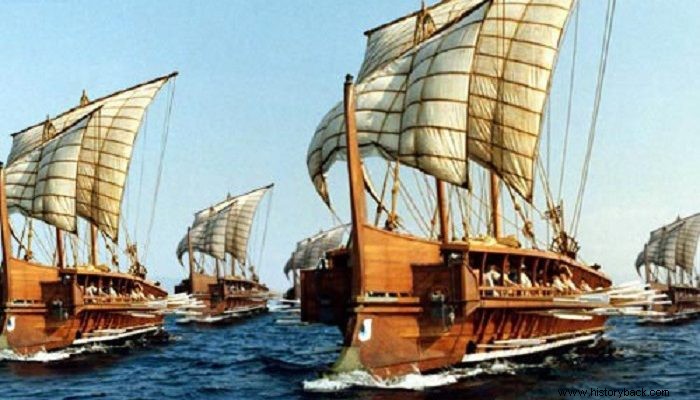
The choice of the point of the conflict with the Persians in Salamis was perfectly studied by the ancient Greeks and not at all random, as it was based on the knowledge of the local climatic conditions. This is shown by a new study from the Atmospheric Physics and Climatology Research Center of the Academy of Athens, led by academic professor Christos Zerefos, which was published in the international scientific journal Atmosphere.
This September marks the 2,500th anniversary of the Battle of Salamis. At the end of September of 480 BC. the Greek fleet, with small forces but with excellent tactics and under the leadership of Themistocles, achieved one of the most decisive victories in history. The new study shows that the great leader's inspired strategy was largely based on the fact that the ancient Greeks and Themistocles himself were aware of the climatic conditions and especially the winds blowing in the Straits of Salamis, adjusting their strategic planning accordingly to benefit from their daily variation.
Scientific findings show that the combination of a north-westerly wind that blew during the night, with the sea breeze that arose after 10:00, formed a "pincer" of wind which, as the day progressed, trapped the Persian fleet in Salamis. The climatological analysis of the wind field in the area where the naval battle took place was based on the available measurements of weather stations in the area, as well as data from the climate and weather models ERA5 and WRF for the period 1960-2019, alongside historical evidence from the ancient sources ("Histories" by Herodotus, "Persia" by Aeschylus etc.).
According to the results of the research, the climatic conditions that prevail in the region today are similar to those that prevailed 2,500 years ago. The main cause of the meltem, which blows from northerly, generally, directions in the Aegean during the warm season, is the combination of the monsoonal low, that is, a thermal low that is created over the wider area of the Indian Peninsula, with the high pressures that prevail during the summer over the Balkans and Central Europe.
The above combination results in the creation of an enhanced northerly current in the Aegean called "etisiai" (which means "yearly recurring"). These climatic conditions were described for the first time by Aristotle in his book "Meteorologia". At the local level, the weakening of the winds in September favors the predominance of smaller circulation systems, such as sea breezes.
The Greeks had knowledge of the local climatology and adjusted their strategic plan accordingly. The Persian fleet took up battle positions on the coast of Attica (Amphiali-Perama) during the night. However, at the first light of day the Greek ships, instead of trying to escape, as the Persians expected, also appeared drawn up in battle formation on the side of Salamis.
When the Persian fleet moved against the Greek, the Greek ships moved in reverse, rowing in formation to the coast of Salamis. According to Plutarch, this maneuver was part of Themistocles' strategic plan and was intended to lure the Persians deeper into the strait and delay the conflict, waiting for the wind to change. Indeed, after 10:00 the wind turned to the southwest (sea breeze) and only then did the Greek counterattack begin.
The sea breeze, combined with the narrowness of the channel, disorganized the Persian fleet. The taller Persian ships were more difficult to steer as they were turned sideways by wind and wave, making them easy targets for the rams of the Greek triremes. Moreover, the strong southeast wind prevented the Persians from setting sail to retreat quickly to the open Saronic Gulf and take the conflict there.
Eventually, a large part of the Persian fleet was lost, while the remaining ships escaped to the Gulf of Falirus during the evening hours, when the winds completed their daily cycle and turned again to the northwest. According to Herodotus, the west wind "Zephyros" carried the wreckage of the Persian fleet to the area of present-day Agios Kosmas, marking the end of the Persian presence in the Mediterranean. The research team included, in addition to Christos Zerefos, the researchers of the Academy of Athens, Stavros Solomos, Ioannis Kapsomenakis and Christos Repapi, as well as the professor of the Aristotle University of Thessaloniki, Dimitris Melas. The study was funded by the Mariolopoulio-Kanaginio Foundation for Environmental Sciences.
SOURCE:APE-ME
